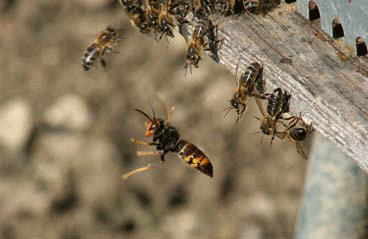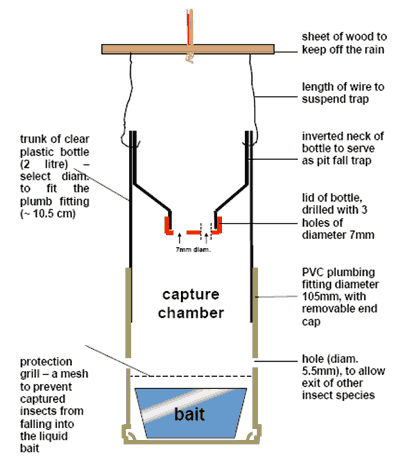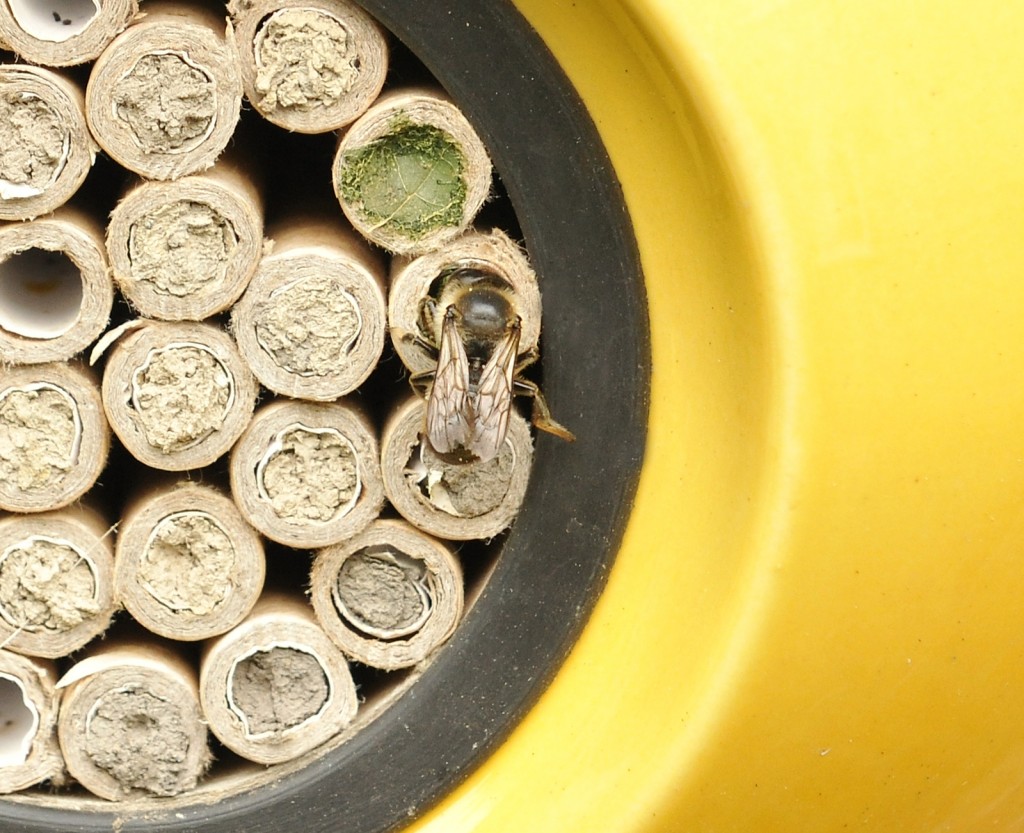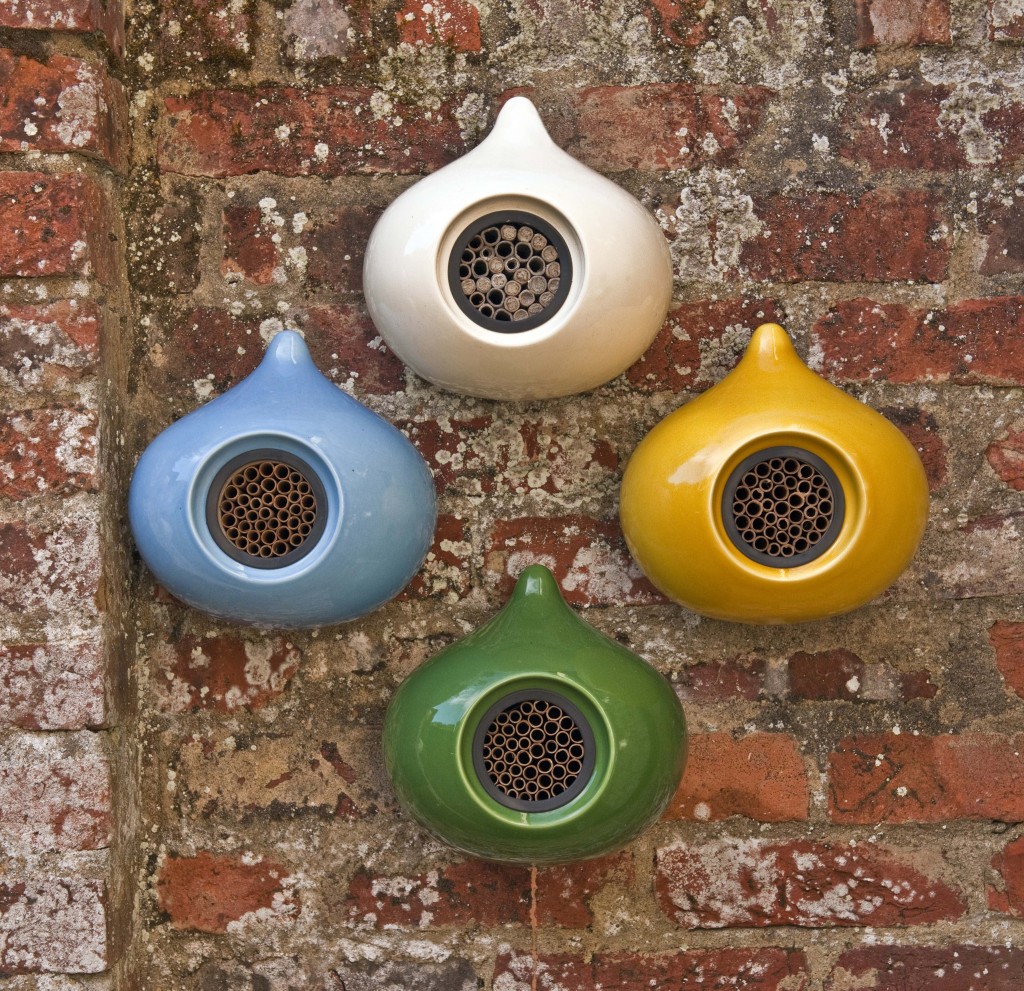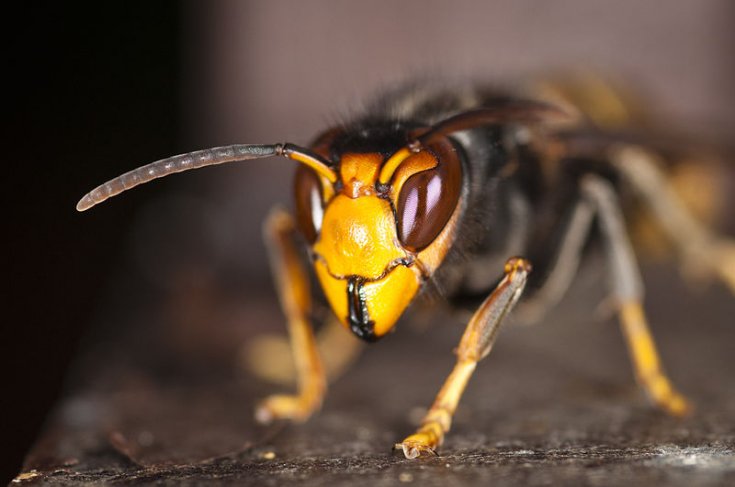
Pollinators are vital to our ecosystems, so it’s worrying that after years of concern, the first Asian hornet sighting was confirmed in the UK in September. Unlike our native hornet, its Asian counterpart has the rather dubious distinction of preying on honey bee colonies and thereby poses a very real threat to colony numbers – as well as other native species.
This creature is often seen hovering outside bee hives, where it will ambush honeybees as they’re returning from their foraging excursions. At this time of year, as honey bee colonies are generally overwintering in their hives, the Asian hornet colonies are most actively engaged in producing queens and male hornets for mating, so although they’re not at their most prolific, it’s still worth taking note.
Here at beepalace, we keep a keen eye on what’s happening with our bee population. Our beepalaces provide homes for solitary bees, such as the leafcutter and the red mason bee, neither of which are common targets of this invasive species, but it’s never a bad idea to familiarise ourselves with potential predators of any key pollinating insects.
Hornets are big. They’re loud and kind of hard to miss. Although the sting is very painful and can persist for several days, they’re generally quite a reclusive species and tend to only get aggressive around food sources. That said, it’s understandable to want to give them a slightly wider berth!
So what can we do to help?
Familiarise yourself with the species: they’re often easily mistaken for other insects
If you’ve ever seen a hornet, you’ll know you have. They are – to put it mildly – large. Here at beepalace HQ we’ve noticed quite a few of the European variety in the past days and weeks as they gorge on fallen fruit. Our native species have distinct yellow bands, much like wasps, and often have a red-ish tinge to their abdomens as well. Their Asian cousin is almost entirely dark, with only a flash of yellow on its 4th abdominal section. So, whilst the sight of a hornet may throw you into a panic, chances are it’s ‘only’ a native species.
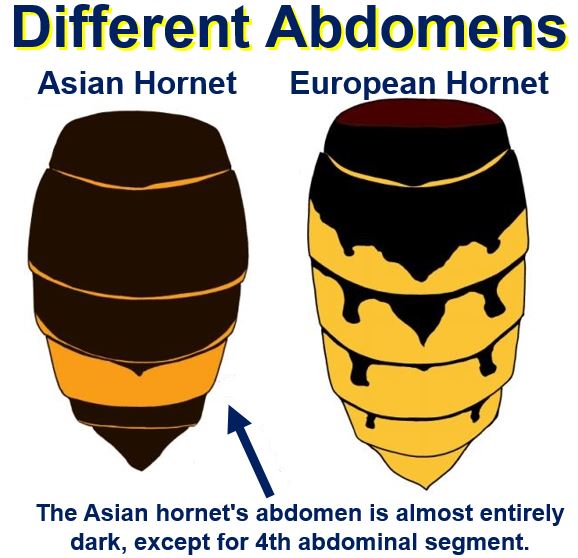
For a great cheat sheet, nonnativespecies.org have a superb downloadable resource, highlighting the differences between the most frequently reported species.
Report sightings
If you think you’ve seen an Asian hornet, report it, even if you’re not entirely sure! The more information the good people have at the Great British Non Native Species Secretariat, the better understanding they’ll have of where Asian Hornets are in the UK. Let’s not forget: the confirmed point of entry in the UK was in Gloucester and surprisingly not along the south coast, where many thought they’d try to launch their offensive. You can report any sightings to alertnonnative@ceh.ac.uk and if you do be sure to include, your name, the location of the sighting and if possible a photograph of the suspect. Only do this last part if you can from a safe distance – hornet stings are painful (though it should be noted, the Bee Unit says they don’t pose any more of a health risk than our native wasps and hornets do. Still, be careful).
Consider making a hornet trap
This is something worth bookmarking now to do in the Spring, when the Queen hornets start to emerge. The traps that seem to be most effective are the funnel-type ones, and they’re easy to make yourself. The National Bee Unit have a good how-to on their website, which you can access here. We’ll remind you of this when the days start becoming longer again!
Support all pollinators!
There’s never been a better time to give our pollinators a helping hand. Bee hotels, like ours, provide protection for solitary bees, and other bug hotels can also provide a good environment for other hard working pollinators. If you’re considering new plants in the garden, the RHS has a great guide for which plants can benefit our pollinators. Winter flowering plants such as heathers and hellebores, and early spring varieties like the humble primrose are wildlife-friendly and worth adding to your garden, if you don’t have them already and will give a boost to winter-active pollinators such as bumblebees and hoverflies, as well as honeybees who may venture out if the temperatures are high enough.
The Asian Hornet might be here, unwelcome as it is, but with a little education and a little effort on our part, we can make life for our oh-so-important pollinating friends that little bit easier. Let’s do what we can.
*The beepalace is frost resistant and can overwinter, but if you do have a cool space to store them over the colder months, you’ll give them a little extra protection from any predators that might view those occupied nesting tubes as a tasty meal.

